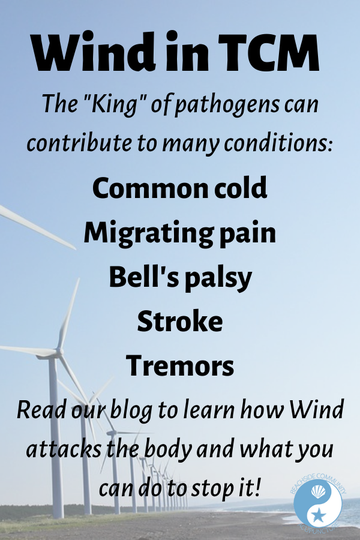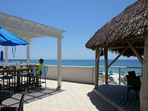
When Traditional Chinese Medicine (TCM) was being formed, scholars did not know about viruses and bacteria like we do today. To make sense of how the outside world influenced the body's balance, they related pathogens back to nature, explaining how each affected the body and what people can do to protect themselves from each. The "king" of these exogenous pathogenic factors is Wind.
The Wind pathogen contributes to everything from Bell's palsy to the common cold to migrating pain, and it can easily combine with other pathogens to give them an easy ride into the body, for instance, a common cold with sore throat and more fever than chills is often due to a Wind-Heat invasion. Wind likes to attack the upper back and neck, so protecting yourself is as easy as keeping that area blocked from drafts. Wearing a light scarf, keeping long hair down, and popping your collar or hood up are all great ways to guard yourself outside. However, in our modern times, Wind can often be more of an issue INSIDE, as fans and vents create artificial breezes that act in the same way. Try not to spend time directly in the path of a vent, and if you enjoy having a fan turned on, keep it low enough that it circulates the air without blowing onto your skin or position it to blow away from you.

Diving a little deeper, Wind can also be internally generated, meaning even if you protect yourself from windy days regularly, you may still have an issue with this pathogen due to a disharmony in your body. The biggest sources of internal imbalances are typically emotions, and because Wind corresponds to Wood in TCM Five Element Theory, excessive stress, anger, and frustration can exacerbate a Wind condition, which is characterized by a change in movement, such as tremors with Parkinson's disease or paralysis following a stroke. A few patterns in particular can lead to the generation of Wind:
- Blood deficiency: Not enough Blood in the meridians is like having an empty pipe, plenty of room for air to move
- Yin deficiency: Not enough fluid/moisture/rest in the body means that heat/energy/activity (i.e. movement and Wind) is unrestrained
- Fire: An excess of heat can produce Wind, just like a house fire can generate its own movement
As with any internal imbalance, the treatment of Wind like this involves fixing the root of the issue in addition to managing symptoms. Acupuncture, herbal medicine, dietary changes, and more might be involved, but in general points along the Wood meridians can be helpful: Massage the flat part of the shin bone to work on part of the Liver channel and the outside of the leg for the Gallbladder, also including point Gallbladder 20 at the top of the next next to the edge of the trapezius muscle. Your Licensed Acupuncturist may have more specific points that he or she would like you to use, but in the meantime, these two areas might make you feel a bit better!
If you think you have a health condition tied to the Wind pathogen, schedule an appointment with us and we'll be happy to help you.

Kathleen Ketola is a Licensed Acupuncturist and the owner of Beachside Community Acupuncture. She loves providing affordable acupuncture to the residents of McKinney, Texas, and surrounding cities like Prosper, Frisco, and Plano, but she also enjoys educating the general public on how acupuncture and Traditional Chinese Medicine (TCM) can treat everything from pain to infertility to stress and beyond. Click "Book Now" at the top of this page to book an appointment or feel free to contact her at (214) 417-2260.








